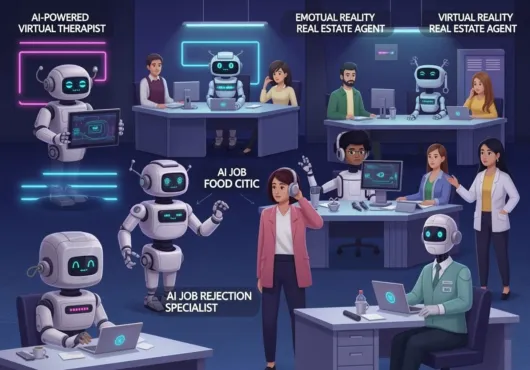There’s no shame in caring about how your resume looks. But here’s the bad news: it’s not humans you’re designing it for. Most resumes don’t make it past the first gatekeeper—a bot. Specifically, an ATS, or Applicant Tracking System, trained to parse keywords, sort candidates, and throw out anything that doesn’t align with a machine-readable job match.
And your passion for restoring old motorcycles? Cool story. It won’t help.
You’re not up against other candidates. You’re up against a machine that scans for keywords, flags missing buzzwords, and dumps half the resumes before a human even looks. If that sounds unfair, you’re right—but it’s still beatable.
The Résumé Black Hole
Companies use ATS bots because they’re overwhelmed. Hundreds of applicants, most of them unqualified. The result? You get screened not by nuance or potential, but by cold logic.
If your resume doesn’t hit specific keywords, formats, or structures, it disappears into digital purgatory. Sometimes a real person never even sees it.
Beat the Bot Without Selling Out
You don’t have to lie, exaggerate, or become a LinkedIn robot. You just need to optimize.
Match your keywords to the job description—literally. If it says “project coordination,” don’t just write “team lead.”
Use standard section headings (Education, Work Experience, Skills).
Ditch the graphic-heavy resume. ATS bots choke on complex formatting.
Save and submit as a plain PDF unless otherwise instructed.
It’s not selling out. It’s writing for your real audience: an algorithm.
Save Your Personality—for the Interview
Here’s the irony. People say “bring your whole self to work,” but the bots don’t want that self just yet. The resume isn’t the place for flair. It’s a pass/fail checkpoint.
Once you’re through the filter, you can tell your stories, show your curiosity, and maybe even mention those motorcycles.
Human Eyes Still Matter—Eventually
Getting past the ATS is a win, but it’s not the whole game. Once your resume makes it to a real person, the stakes shift.
Here’s where structure gives way to story. A recruiter might spend 10 seconds scanning the page before deciding whether you’re worth the interview. That’s when layout, clarity, and subtle emphasis pay off.
Want to stand out? Use your bullet points to actually say something. Instead of:
“Managed projects and met deadlines”
Try:
“Led a 3-person team on a product launch that cut support tickets by 40%”
Even bots will notice numbers. Humans will remember results.
Conclusion
The old resume advice said to stand out. The new advice? Pass the scan.
If you want to look smart in today’s job market, don’t spend hours tweaking your font or waxing poetic about your passions. Focus on relevance, structure, and signal clarity. You can be impressive once a human is listening.
You’re not gaming the system. You’re defending yourself from it. The more you learn to speak in ATS code, the better chance you have of cutting through the noise, without cutting out who you are.



